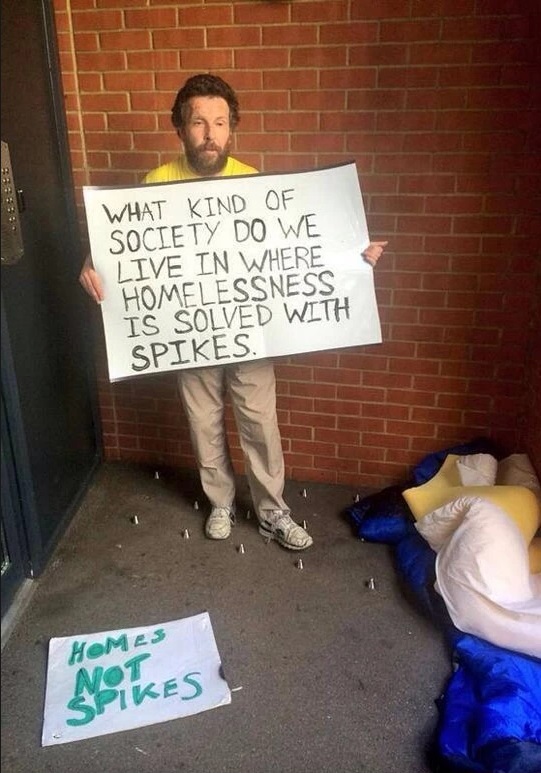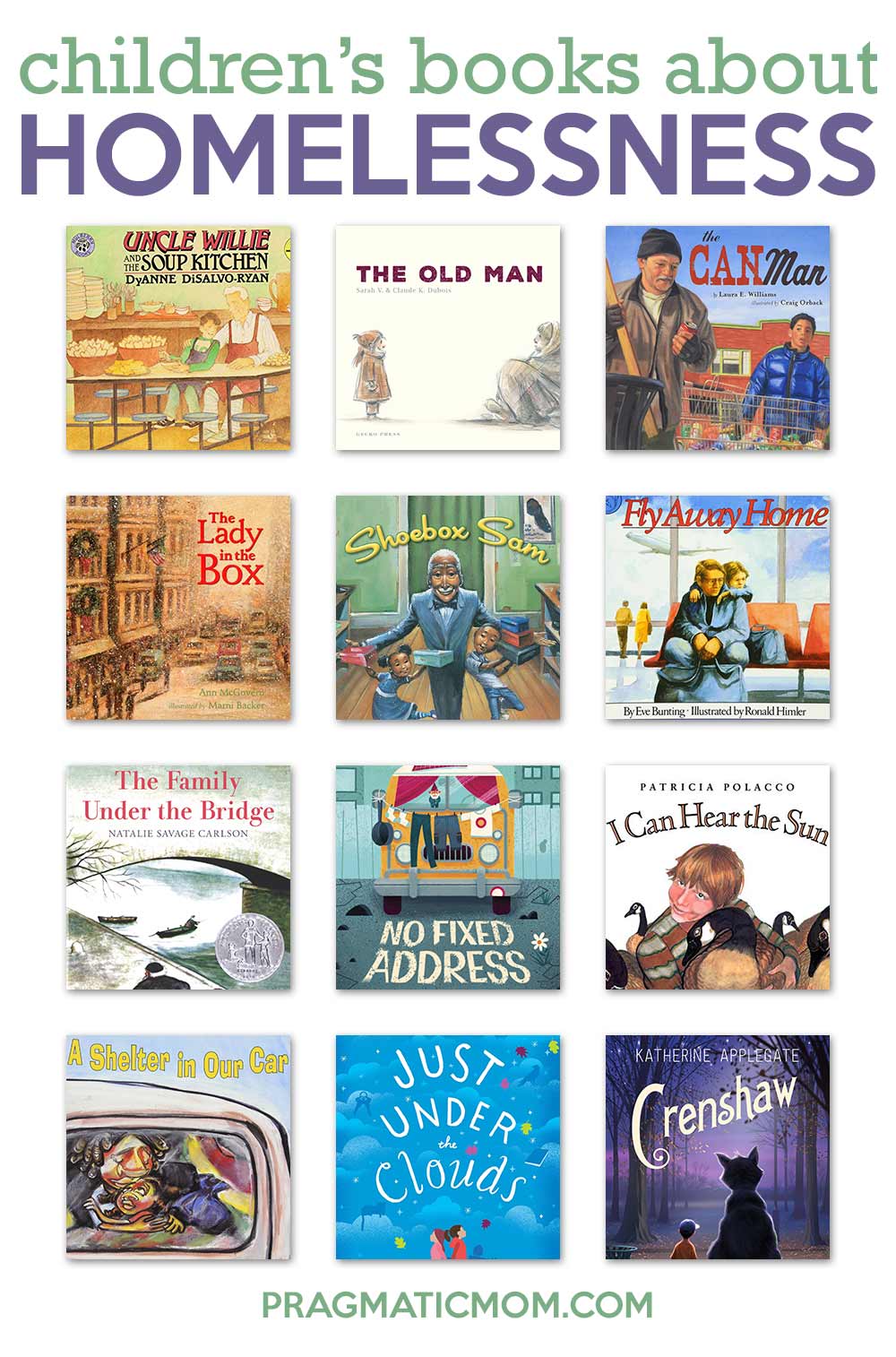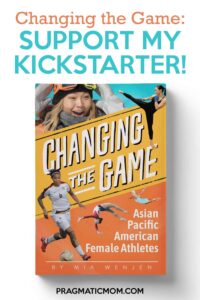Mackintosh Williams, 11,homeless Boy Reads as Many Booka as He Can 1/14/2018
Within: Homelessness tin can exist a difficult topic to talk well-nigh with your kids. Read these children's books about homelessness to open up discussion.
In creating this list, I noticed that most of these children's books nearly homelessness have parents who work function-time jobs, often more than 1. Despite shelter uncertainty, they are going near their lives, sending their children to school, and even going to college themselves.
It's ordinarily a series of setbacks or a tragedy similar the death of a breadwinner that sends them spiraling downward. This is not surprising given that nigh Americans are i paycheck away from the streets.
On a single night in January 2015, 564,708 people were experiencing homelessness — meaning they were sleeping outside or in an emergency shelter or transitional housing program. National Alliance to Cease Homelessness
Part of this 564,708 homeless number includes women and children. It's a heartbreaking statistic. Imagine families with children trying to become almost their everyday life without a place to sleep. Information technology'due south becoming a more common sight in cities like Boston where I live.
With the fasten in homelessness, has come the homeless spikes. Yes, it'south every bit horrible as it sounds. MacDonald'southward is one such company that puts anti-homeless spikes designed to go on the homeless away.

Some artists decided to fight back against the anti-homeless spikes, starting a move they call "Space, Not Spikes."

"Space, Not Spikes" reclaimed the spiked area by covering it with bedding, pillows, and a bookshelf stocked with reading cloth. Upworthy
Hostile design doesn't solve the issue of homelessness. It just tries to remove the homeless from the line of sight of those who accept a place to alive. And yet, at that place are humane solutions to homelessness like these tiny homes the size of garden sheds.

My oldest, Grasshopper and Sensei, is headed for art higher. She thinks near social bug from a pattern perspective. I hope that i day she volition work on the issue of homelessness.
Perhaps this book listing will inspire kids to tackle this trouble with solutions that start and end with compassion, not spikes? Here'due south hoping!
How virtually you? What books would you add to this list? Cheers for your help!
Picture books about Homelessness
Uncle Willie and the Soup Kitchen by DyAnne DiSalvo-Ryan
Nationally, about one out of every viii people is poor. Many of them are children. The patrons of the soup kitchen include the unemployed, the needy, and the homeless. No one is excluded.
A young boy is nervous to see the Can Man in his neighborhood, only his Uncle Willie who works at the soup kitchen knows him well. The boy notices a woman sleeping on a park bench and decides he wants to acquire more most his uncle's soup kitchen.
On his day off from school, he accompanies his uncle to work. It'south footling things that he learns: children who sit down in loftier chairs eat here; not everyone is homeless; somehow in that location is always enough food for everyone. [picture book, ages 6 and upwardly]

The Old Human past Sarah 5. and Claude K. Dubois
A niggling girl and an old man both go up in the morning. She gets ready for schoolhouse. He wakes up on the streets. All day, the old man tries to become warm and observe something to consume. Information technology's clear that the quondam man didn't utilise to be homeless.
The reactions to the old homo are not surprising. He's shunned, ignored, and unwelcome where always he goes. At the cease of the twenty-four hours, he goes to a park where the little girl sees him. She offers him her sandwich, and this act of kindness helps him to feel a role of society over again. [motion-picture show book, ages 5 and up]

Finding Home past Esteli Meza
When Conejo's dwelling is blown away, his friends help him out. Lobo Lobito drives him on his motorbike to search for his house and takes a selfie with him to cheer him upwardly. Perezoso climbs trees with him to look for his house and gifts him his favorite blossom. Buhita cheers him up with music. Conejo doesn't notice his firm, but he finds a new one and fills it with the gifts and memories of his friends. [picture book, ages iv and upwards]
The Can Man by
The Can Human being in this book, Joe Peters, is non the same person in Uncle Willie and the Soup Kitchen only the books pair well together.
This picture book gives a backstory to how someone ends up every bit a Can Man. He used to be Tim's neighbor in their apartment. When the auto trunk shop closed, he lost his job, and couldn't find a new one.
Tim wants a new skateboard for his altogether but his parents can't beget it, fifty-fifty when information technology goes on sale. The Can Man gives him an idea to save money towards the lath, simply there aren't enough cans in their neighborhood to meet both their goals.
Joe Peters could use a new coat. It's bad-mannered, but together they load Tim's seven bags of cans to redeem them. With the money in his manus, Tim decides to forgo the skateboard and requite the money to Joe Peters instead. On his birthday, Joe has a surprise for him.
What I like well-nigh this volume is that it humanizes the homeless. It also shows how one individual, even a kid, tin can make a difference. [motion-picture show book, ages six and up]

The Lady in the Box past Ann McGovern, illustrated past Marni Backer
There was a lady who slept in a box down our street.
The lady in the box looked hungry.
It was Lizzie's idea to bring her food.
The lady in the box is one of the homeless people that no one wants most their store. She picked that particular spot, though, because warm air came upwardly through the grate, and it'south ten degrees above aught exterior. Two children, Lizzie and Ben, decide to help, then their mother gets involved.
The lady in the box, she learns, is Dorrie. She lost her job, and then her apartment. The shelter for homeless women didn't work out either.
This is an unflinching but compassionate view of the homeless, and how only recognizing their being can make a difference. The note from the author points the fashion for children to get involved if they want to help. [picture book, ages six and upward]

Shoebox Sam by Mary Brigid Barrett, illustrated past Frank Morrison
Shoebox Sam repairs and shines shoes on the corner of Magnolia and Vine, but he likewise easily out kindness and dignity to those who need it most. Compare this volume with the homeless spikes that some other shop owners utilize instead. [picture book, ages four and up]

Fly Abroad Home past Eve Bunting
My dad and I live in an airport. That's considering nosotros don't take a home and the airdrome is better than the streets.
Andrew and his male parent alive in an aerodrome. Even though Andrew'due south father works part-fourth dimension as a janitor in an office, he doesn't brand enough to afford the apartment they had earlier mom died. This is a deplorable story virtually the bleakness of beingness homeless.
The just bright spot is the bird that Andrew spots is able to escape the airport and fly free. It gives him hope that one mean solar day he volition do the same. [picture volume, ages vi and upward]

A Haitian Story of Hope: Sélavi: That is Life: by Youme Landowne
Sélavi is an orphan in Haiti who is taken in by other street children, who look out for each other, sharing food and companionship. Men in uniform chase them out, and the children need assist.
With support from their customs, they are able to build a shelter and a children'south radio station, Radyo Timoun, which is nonetheless in functioning today. This is the true story of some of the homeless children in Haiti. [movie book, ages 6 and upward]

The Lunch Thief by
At that place'south a tiffin thief in Rafael's class and he knows who it is. The new kid, Kevin, with scraggly hair has taken a lunch each day. Rafael decides to take mama's advice of using his mouth before his fists. He learns that Kevin is from Jacinto Valley where half the houses were burned down.
Instead of turning Kevin in, Rafael finds a different fashion to handle the problem. I love how this picture volume sends a bulletin of pity. [pic volume, ages eight and up]
 I Tin can Hear the Lord's day: A Modernistic Myth by Patricia Polacco
I Tin can Hear the Lord's day: A Modernistic Myth by Patricia Polacco
"Nosotros could all fly once," Fondo said every bit he gazed at the clouds. "We just forgot how. If we'd recall hard enough, we'd remember."
Lake Merritt in Oakland, California is home to animals at the reserve and to the homeless. Stephanie Michele, a keeper of the animals, takes care of everyone, including a small boy named Fondo. Together they take care of the geese.
He takes special intendance of a minor bullheaded goose and seems to have a special understanding of the animals at the park. When his orphanage decides to ship him away to a special needs schoolhouse, he decides to bring together the geese on their migration.
Can he really fly? Is this a metaphor or a myth? You decide. [picture book, ages 6 and up]

A Shelter in Our Auto by Monica Gunning, illustrated by Elaine Pedlar
A mom and her daughter live out of their car. They lost their apartment when the father died. As immigrants from Jamaica, they don't take a network of support hither in the U.s.. Her mother insists on teaching for Zettie, the piddling girl, fifty-fifty though she gets bullied at school for their beat-up car.
The mom herself is attending community higher while working part-time jobs. For all the displacement, Zettie feels her mom's love, conclusion, and support. Together, they can overcome whatever claiming. [picture book, ages 5 and up]

December by Eve Bunting
A boy and his mom live in a cardboard box that they've carefully busy for Christmas, including an angel torn out of a calendar from the month of December. On Christmas Eve, an old woman asks for shelter and they permit her in.
The male child notices that she's hungry and offers her the cookie that he worked and so hard to earn. The onetime woman is gone past morning, but the boy and mom witness a Christmas miracle which is a life-irresolute experience. If you believe in Christmas miracles, you must read this volume.
With messages of compassion and sharing, information technology's a book for all seasons but especially for Christmas. [picture show book, ages 4 and up]

Sam and the Lucky Money by Karen Chinn, illustrated by
Sam receives four brilliant ruby envelopes, each with one dollar inside, every bit part of the traditional Chinese New Year celebration. He accompanies his mother through Chinatown and realizes that his "lucky money" won't purchase every bit much equally he had hoped.
His mood is further sobered later he stumbles on a homeless man in the street. He ends up deciding that his iv dollars would be all-time spent on the barefoot stranger. Encounters with the homeless tin can be scary, as in the example here where Sam is startled and tries to brand sense of what he's seeing.
Seeing the homeless is the offset step, recognizing their plight, the second, and deciding to assistance is that act of human kindness that we all hope to instill in our kids. [motion picture book, ages 5 and upwardly]

Honey Librarian by Lydia K. Sigwarth, illustrated past Romina Gulotta
"Every mean solar day, you gave me a hug.
Every day, yous made me experience condom and happy.
Those days, the Library was like a home. My ain special home. (Even though it wasn't a business firm.)"
This is the true story of Lydia M. Sigwarth and the time when she and her family lived at diverse relatives' houses. This was a stressful time for Lydia merely the library became her sanctuary. It was because of a very special children'due south librarian who fabricated her experience welcome. This life-changing librarian inspired Lydia to become a librarian herself and create Library Homes for others. [motion-picture show book, ages four and up]

Centre Grade Books well-nigh Homelessness
Crenshaw by Katherine Applegate
It's a irksome sink into homelessness, just a hard scramble back up. Applegate'southward chapter volume captures the stresses it puts on a family, peculiarly on the children. Going-into-fifth-form Jackson's coping mechanism is an imaginary talking cat that pops upwards when he's homeless.
Without pathos, but with a realistic portrayal of homelessness, this is a story that captures opens your eye to those in need. [chapter book, ages 8 and upwardly]

Just Under the Clouds by Melissa Sarno
Instructor and author Caroline Starr Rose wrote about this book in her Classroom Connections blog post:
Just Under the Clouds is a novel for heart grade readers about Cora, a 12-yr-onetime girl living in a homeless shelter in Brooklyn with her mother and sister.
When their room at the shelter is ransacked, the family moves in with her mother'south one-time friend and Cora discovers "the tree of sky", a tree that can grow in even the worst weather condition. It sets her on a quest to understand the true meaning of home. [chapter book, ages 8 and up]

How To Steal A Dog: A Novel by Barbara O'Connor
Georgina is homeless and living with her mother and brother out of their machine afterward her father leaves them. She cooks up an elaborate scheme to kidnap a dog to and then return information technology for the reward. She kidnaps a dog named Willy but things don't work out the way she thinks it will.
Will Willy teach her right from wrong? [chapter book, ages 10 and up]

Hold Fast by Blue Balliett
Blue Balliett writes really lyrically which is something that I don't await is a tightly wound mystery just information technology makes this book a pleasure to read. Balliett sets this mystery in Chicago and immerses it with the poetry of Langston Hughes.
Early, her blood brother and mother take to flee their apartment and live in a homeless shelter when their begetter mysteriously disappears. They are all caught in a web of violence surrounding an international diamond smuggling ring related to their father'south library task.
Information technology's up to Early and her family to figure out what happened, and how to aid their dad. [chapter book, ages viii and upwardly]

The Family Nether the Bridge by Natalie Vicious Carlson
This was a book society for kids book selection for PickyKidPix. The activeness was to brand a coin purse using fabric and glue guns. The mom then prepare up a "grocery store" with her week'southward shopping and displayed the prices for each item. The kids had $10 to purchase food.
The idea was that 2nd graders may not realize that $10 doesn't buy a lot of nutrient. Another spin would be to have each kid bring $10 from home and and so go to the grocery store to purchase $10 worth of food to donate to a food bank.
This book social club was during the vacation season because the mom wanted to take the kids think about others. [chapter book, ages 8 and upwardly]

Newspaper Things past Jennifer Richard Jacobson
This is another take on homelessness. I knew a college classmate who lived in a homeless shelter earlier she went to college only I never was privy to her story. This book might exist a version of her story.
Ari and her 19-yr-old brother, orphaned when their mama died four years ago, movement out of their legal guardian'south dwelling to couch surf while in search of their own flat because he butts heads with her.
Ari is trying to employ to a competitive centre school during this uncertain time but the stresses of homelessness might brand her break her promise to mama and that's the terminal matter she wants to happen. [chapter book, ages x and upwardly]

Magnus Chase and the Gods of Asgard : The Sword of Summer by Rick Riordan
Magnus has been living on the streets of Boston for 2 years always since his mother died in a suspicious fire. Evading constabulary officers and truant officers has go his life. Almost people don't discover Magnus lying in a filthy sleeping bag in the middle of wintertime.
Rick Riordan has a talent for creating characters that ascertain the pulse points of our social club. Magnus' boyish homelessness doesn't last long in this chapter book series, but it does smooth low-cal upon the plight of the homeless. For that, I thank him. [chapter book, ages 8 and up]

My Jasper June past Laurel Snyder
Review by Randomly Reading:
"Both Jasper and June are such well-defined, sympathetic, believable characters. Coming from very different backgrounds, each finds themselves in circumstances made difficult by the adults who should have been there for them, only weren't. Their friendship becomes a real godsend, providing them with a hole-and-corner place to work through their feelings on their own." [middle class, ages 10 and up]

No Fixed Address by Susin Nielsen
Review from Ms. Yingling Reads:
"Felix Knuttsen and his single mother Astrid move around a bit in Vancouver considering Astrid finds it hard to go on a task after her career teaching art founders. When her latest swain, Abelard, decides to get to India, Felix is glad to come across him become, only it means that the just place he has to live is the Westfalia van afterwards briefly landing with a friend, Soleil. Since information technology's August, they take a little holiday, and then Astrid tells Felix he can go to whatsoever schoolhouse he wants. Using a fair amount of subterfuge, she gets him into the French Immersion School. Living in the van requires a lot of planning and sacrifices, from showering at a community middle and eating meals out of cans to carefully crafted stories about his movements." Felix enters a game show competition with a prize of $25,000 that he hopes to win to bring them stability merely as the competition nears, his life starts falling apart. [chapter book, ages 10 and upward]

Roam by C. H. Armstrong
Ms. Yingling Reads has a great review here:
Life can go wrong quickly. For Abby'due south family unit, it starts with stepfather Nick's hours beingness cut, her mother having an affair with a coworker and losing her teaching job, Nick losing his job, her mother having a seizure, and hospital bills making the family behind on their rent. Before Abby knows information technology, her parents and younger sister Amber have left Omaha and are living in their van in Rochester, Minnesota. They park in the Wal-Mart parking lot while they await to get into a shelter, trying to stay warm and eating at a soup kitchen. Abby goes back to high school to resume her senior twelvemonth and immediately falls afoul of Trish, the about popular girl in schoolhouse, especially when Zach, Trish'south ex-boyfriend, starts dating Abby. Still, there are expert things. Classes go well, Abby enjoys choir, and she makes a strong core of supportive friends who even loan her clothing to go to the homecoming dance. The family gets into the shelter merely has to leave after two weeks. Abby has a task delivering newspapers, and her parents are trying to find employment. Nick gets part-fourth dimension work every bit a custodian at a church building. Things are bearable until Amber and then Abby get very ill and winter becomes colder. Drastic, the family unit starts sleeping at the church, cleaning upward their things at 4:30 a.thou. They are eventually plant out, but the pastor is helpful and finds some solutions for them. Things are looking up until Trish is part of a performance group that has a testify at a soup kitchen… and Abby is in the audience. Information technology gets splashed all over social media that Abby is homeless. How will her friends react? [young adult, ages 12 and upward]

Stay by Bobbie Pyron
Review from Ms. Yingling Reads:
"Piper's family is down on their luck, but yet positive and working to brand their lives amend. The realities of living in a shelter, specially when other kids at school know you do, are unflinchingly portrayed, and reading well-nigh Piper's struggles volition hopefully brand children more empathetic. Jewel's journeying to living on the streets with her dear dog is too described in a way that shows how close many people are to being homeless– just a small series of setbacks can exist all it takes. The community of homeless dog lovers is specially fascinating. This was merely a well-written story with a fantastic combination of ingredients." [eye form, ages 8 and upwardly]

Lizzie Flight Solo by Nanci Turner Stevenson
Review from Ms. Yingling Reads:
"When Lizzie's begetter is arrested for embezzling from his visitor, she and her mother are not able to keep their farmhouse. They motility to a nearby boondocks where people won't know them and end up staying in the Good Hope family shelter. Lizzie finds it stressful and challenging to keep people from finding out well-nigh her past, and takes great comfort in walking through the woods near the shelter and watching people riding in the fields of the stables there. When her mother gets a job, Lizzie says that she volition volunteer at the library, but besides uses this as cover to spend fourth dimension at the stables. The staff there are friendly and understanding, and give her an application to work in the stables in substitution for lessons. When school starts, she meets Bryce, who has just moved from the west to alive with his father afterwards his parents' divorce. Bryce has his ain horse and is with his father considering he was promised riding lessons, just his well-to-do male parent doesn't really approve of Bryce's desire to learn dressage instead of Western riding. Lizzie understands having difficulty with a parent since her begetter does non contact her and her mother when he is released on bail, which was paid for by some other adult female. Lizzie falls in honey with Burn, a new horse that is being trained, and decides to relieve up the $ane,000 needed to buy him. She babysits, cleans tack, enters contests, and manages to salvage up enough to purchase the horse, which the caring staff members at the stable warn her will probably non happen. Bryce has some issues in his life, but they manage to work out in the same way that Lizzie's do– slowly, and not ever the way that they imagine to be all-time." [heart grade, ages 8 and up]

Parked  by Danielle Svetcov
by Danielle Svetcov
Review by Ms. Yingling Reads:
"This was an interesting book with many levels. The juxtaposition of Cal and Jeanne Ann'southward lives was particularly interesting since they lived on the same street. The details of why the family ends upwards living in a van, and how they manage diverse activities is important in helping young readers understand how others may face difficulties they may not. Cal's presence makes the neighborhood initiative to remove the vans more interesting, and the fact that Jeanne Ann loves reading volition immediately endear this to librarians and linguistic communication arts teachers. The San Francisco setting and the different restaurants add to the entreatment of this." [middle grade, ages 10 and upwardly]

As well …
The family unit'south reasons for moving to the shelter are well explained, simply I also liked the mother'southward explanation (as well as the author'southward notes at the dorsum) that anybody was at that place because they striking a rough patch of some sort.
We are seeing more middle-grade literature featuring homeless and home insecure families, but since the stories are all different, nosotros can always use more than.
Bauer's Almost Dwelling, Sarno'sJust Under the Clouds, Nielsen'due southNo Fixed Address, Messner'sThe Exact Location of Home,Balliet'southwardHold Fast,and the upcoming Cameron'southward Maybe a Mermaid,Knowle's Where the Center Is, Pyron's Stayand Armstrong's Roamare all proficient depictions of different types of families in transition.












Carry Me Home by Janet Fox
Review by Ms. Yingling Reads:
"It's important to show a wide diverseness of economic circumstances in middle grade literature, and this is a very effective look at how one family ends up homeless. There are 2 other books I can recollect of where the family unit lives in a vehicle (Svetcov'due south Parked and Nielsen'sNo Fixed Address), merely Lulu'due south experience with her begetter being gone is somewhat unique. I loved her resourcefulness and how she tried to hide her fearfulness from her younger sis. It was likewise heartwarming to see how much help was offered when her situation was finally revealed." [middle grade, ages 8 and up]

Shelter past Christie Matheson
Review from Ms. Yingling Reads:
"Maya and her family have e'er struggled financially. Her mother was an art instructor, and her male parent was a freelance writer who had recently gotten a job working with a famous chef on a cookbook. They alive in a pocket-size, hire-controlled house nigh the school where Maya's mother taught art, but when the male parent is badly injured in a car accident and the business firm's owner gets a skilful offering to sell, Maya, her mother, and her young sister Gabby discover themselves homeless.
They are fortunate to go a identify in a family shelter, but it'southward hard for them to get a new place. Gabby was born with many wellness issues and allergies, so it's difficult for the mother to observe a place where she can piece of work and accept intendance of Gabby. On the day of the story, cold rain is forecast, and Gabby has to find her way across town to the school near her quondam house. She doesn't have a raincoat or an umbrella, which is a problem at her school, which doesn't have indoor hallways (which is apparently a common thing in California). She has other problems as well. Since her family unit could take very express possessions to the shelter, she carries her most treasured possessions with her in her haversack. Her best friend, Abby, wants to accept sleepovers, but Maya hasn't told her that her family is in the shelter.
Worst of all, hateful girl Sloane and her minion Madison are constantly making comments almost how wealthy they are and making fun of Maya because she is non… and a school unit on helping the homeless is coming up in class. Combined with the worry near her father's health (he's in the hospital in a medically induced blackout), this is a lot for Maya to bargain with while she is at school. Her teachers are supportive, and the kind remarks they make or the small help they offer helps a lot. Maya's mother is interviewing for a job, and the family volition be visiting the father in the hospital to check on his progress, both hopeful things in Maya's world, merely when Sloane steals her haversack, information technology's likewise much for Maya to bear lone. Will she exist able to allow her best friend and others in her life know all of the difficulties she is facing?" [center grade, ages 8 and up]

To examine any book more than closely at Amazon, delight click on epitome of volume.

Every bit an Amazon Associate, I earn from qualifying purchases.
p.due south. Related posts:
Gratis Downloadable Classroom Poverty Kit: Understanding Poverty in America
Understanding Poverty: A Book List for Ages 4-12
Middle Grade Books Featuring Characters Who are Incarcerated
166 Chapter Books for Difficult Situations: #MGGetsReal
My books:







All-time #OWNVOICES CHILDREN'S BOOKS: My Favorite Diversity Books for Kids Ages i-12 is a book that I created to highlight books written past authors who share the same marginalized identity as the characters in their books.
Please follow and like united states:
![]() 15
15

Source: https://www.pragmaticmom.com/2017/06/homelessness-in-childrens-books/

0 Response to "Mackintosh Williams, 11,homeless Boy Reads as Many Booka as He Can 1/14/2018"
Postar um comentário